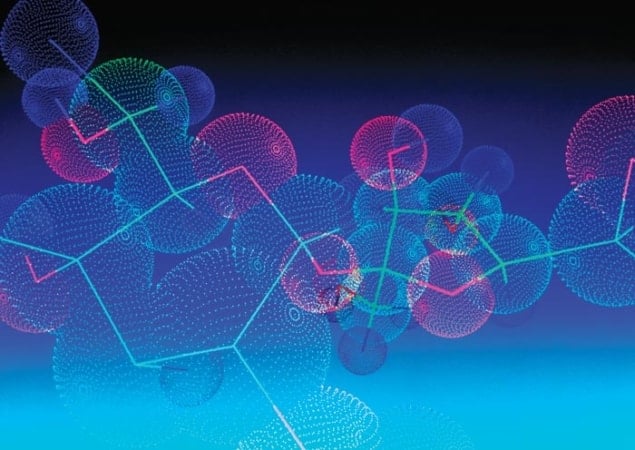Roald Hoffmann: On the Philosophy, Art, and Science of Chemistry
Ed. Jeffrey Kovac and Michael Weisberg
2012 Oxford University Press £22.50hb 208pp

For roughly the last half century, chemistry has perhaps been the most disparaged of the sciences. Among members of the public, the very word “chemical” has come to have opprobrious connotations, and some physicists (and even chemists) have argued that chemistry is reducible to physics, and thus not truly an independent science. But there is also a more subtle problem. In contrast to biology, which tells us about our organic origins and our nature, or physics, which traces and predicts our cosmic origins and destiny, chemistry has appeared to be the science with the least to say about the human condition, and therefore about the humanities and the arts.
Roald Hoffmann is trying to change that perception. One of the world’s most distinguished living chemists, Hoffman received a share of the 1981 Nobel Prize for Chemistry for his work on the structure of chemical reactions, but he also has an exhaustingly wide range of interests within the sciences and in virtually every area of cultural activity. In the essays in Roald Hoffman: On the Philosophy, Art, and Science of Chemistry he has used this enormous breadth of interest and knowledge to demonstrate connections and resonances between chemistry and extra-scientific domains, notably the humanities and arts. The result is a vibrant, stimulating and thought-provoking volume. In addition to its general appeal, Hoffmann’s reflections on the similarities and differences between the thought and practices of chemists and physicists should be of special interest to readers of Physics World.
The book comprises a set of 28 essays by Hoffmann and some collaborators (notably the chemist Pierre Laszlo), with publication dates ranging from 1988 almost to the present. Some of the essays are unpublished lectures, but most appeared in professional chemistry journals or in science-focused journals such as American Scientist and Scientific American, while a few were published in art journals – including one in an anthology on crafts that described, among other things, the similarities between craft and laboratory chemical practice. Editors Jeffrey Kovac and Michael Weisberg have organized these essays into five categories: chemical reasoning and explanation; writing and communication in chemistry; art and science; chemical education; and ethics in science. Although most of the essays are relatively short, this is not a book to be read quickly from cover to cover. Rather, each essay requires close reading and is then to be savoured and considered.
Is there an overarching theme or set of themes in these essays? I shall hazard an affirmative answer and quote from the book’s first essay, “What might philosophy of science look like if chemists built it?”:
“Chemistry always was the art, craft and business of substances and their transformation…With time, we’ve learned to look inside the innards of the beast, and reasoned out that in the macroscopic matter, static and undergoing transformation, there are atoms, and, much more interesting, persistent groupings of atoms which are molecules. So chemistry is also the art, craft, business and science of molecules and their transformations.” (p27)
What interests me as a historian of science about this passage is the way it describes the multiple and proliferating natures of chemistry. The discipline has always been about manipulating macroscopic material transformations to make things, but in more recent centuries, chemistry has also become “the science of molecules”. Its lifeblood nowadays is the representation and transformation of atomic arrangements in molecules, utilizing complex theory and sophisticated laboratory techniques – all while continuing to make things by means of molecular synthesis.
This quotation also implies that chemistry is a human activity, one that is deeply involved in and influenced by other human activities. Like the arts, Hoffmann argues, it is a highly creative pursuit; theoretical insights and laboratory discoveries are not readily captured by standard philosophical methodologies such as inductivism, Popperianism or covering-law models. It is also like the visual arts in its focus on molecular graphic representation.
Prometheus represents the element of design, the process of fruitfully taking advantage of chance creation
Many of these themes appear in each essay, and I shall use one of them as an exemplar. The point of departure in “How should chemists think?” is the central image of Plato and Aristotle in The School of Athens, a fresco by the Renaissance painter Raphael. Hoffmann uses this dichotomous image of the concrete (Aristotle) versus the ideal (Plato) to segue into a long meditation on chemical molecular synthesis. Such synthesis, he argues, is “a patently creative act” (p130), often involving complex syntheses of “natural” versus “unnatural” (human-created) molecules. Hoffman then describes some examples of modern chemical molecular synthesis, such as a complex antibiotic fabricated by chemists at Merck and an extraordinary assembly of ferric (iron) ions in a nearly circular ring held together by organic radicals. The structure of this “ferric wheel” was revealed by X-ray diffraction analysis in the 1990s and, unlike the antibiotic, it has, as yet, no known uses. Nevertheless, its beautiful form elicits a strong aesthetic response from Hoffmann; for him, he writes, “this molecule provides a spiritual high akin to hearing a Haydn piano trio I like”. A few pages earlier, Hoffmann had compared the laboratory fabrication of complex molecules to architecture, noting that “chemical synthesis is a local defeat of entropy, just as our buildings and cities are” (pp132–133).
Much else goes on in this short chapter, but I shall move to Hoffmann’s concluding meditation on the Greek myth of Prometheus. While Hoffmann does not neglect the unnatural (and dangerous) hubris associated with this bringer of fire from the gods, he argues that the Promethean figure is also a symbol of creativity. “Were chemical synthesis in search of a single icon,” he writes, “the outstretched hand of Prometheus bringing fire to humanity would serve well.” Noting that the name Prometheus means “forethought”, he adds that the figure “represents the element of design, the process of fruitfully taking advantage of chance creation…The hand of Prometheus is the symbol of creation – the hand of God reaching to Adam in Michelangelo’s fresco, the hands in contentious debate in Dürer’s Christ Among the Doctors, the infinite variety of hands that Rodin sculpted”. Hands, he concludes, can “bless, caress and hide, but most of all, they shape” (p140).
Another essay, on “Molecular beauty”, is likewise worthy of more extended discussion than this limited space allows. It originally appeared in the Journal of Aesthetics and Art Criticism, and its noteworthy features include the clear exposition of the chemistry of molecules that Hoffman regards as “beautiful” in structure. He elucidates what he means by “beautiful” in a very personal, yet sophisticated meditation. The book’s essays on chemical education and scientific ethics also contain much of great value and interest. In the former, Hoffman is insightful and eloquent on the importance to academic research chemists of teaching undergraduates; in the latter, his thoughts on the social responsibility of scientists and the need for “green” chemistry deserve a wider audience.
We live in a world where science – especially chemistry, if taken in its broadest definition to include molecular biology and perhaps solid-state physics – plays an enormous and ever-increasing role. It is also a world in which the humanities and the arts have been thrown on the defensive and forced to justify continued support. In such a world, it is imperative that the writings of people such as Hoffmann – who are capable of stimulating fruitful dialogues between the sciences and extra-scientific cultural domains – be read, contemplated and discussed. It is therefore a pity that almost none of these essays appeared in periodicals that naturally attract an educated non-scientific readership. The only exception was an essay that appeared in an art history journal, and even this has a very specialized and limited audience. I hope that the title of this book will intrigue scientists from all branches of the sciences and non-scientists from all domains of cultural activity, and thus secure and engage a wide-ranging readership.



